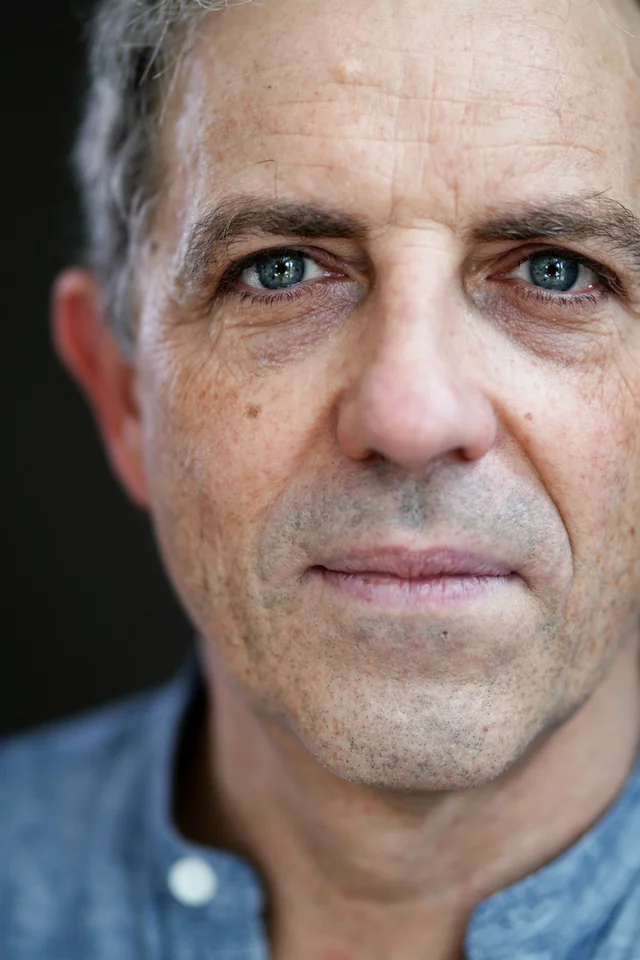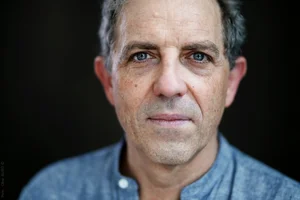Silence as wealth
Stefano Gervasonis talks to Benjamin Herzog about his violin concerto Tacet, which explores silence as an attitude and expression of inner depth. The revised version, premiered in Basel, presents silence as musical richness and a moment of freedom—subtle, flowing, and full of meaning.
«Hi Benjamin, I'm Stefano,» flashes up on my phone. I'm meeting Stefano Gervasoni in Paris. He writes that he's standing at a metro entrance on Place d'Italie, right next to the café where we've arranged to meet. Since Stefano Gervasoni first came to the city in 1992 for three years to study composition at the Institut de recherche coordination acoustique/musique IRCAM, he has returned there regularly. Since 2005, he has held a professorship in composition there himself.
The conservatory is located in the north of the city. Gervasoni lives in the south of Paris, more precisely in the 13th arrondissement. The Italian Gervasoni is drawn even further south when he has had enough of the hustle and bustle of the capital. He regularly returns to the tranquil town of Bergamo, where he was born in 1962.
On May 2 this year, his new violin concerto Tacet premiered in Milan. The soloist was violinist Patricia Kopatchinskaja, to whom the concerto is also dedicated. «Il rumore non fa bene, il bene non fa rumore», Gervasoni quotes his mentor, composer Niccolò Castiglioni, «Noise is not good, good things make no noise». But how do you compose a 25-minute ‹Tacet›, a silence, if you want to translate the Latin verb literally, I ask him in our café? «There is, of course, a certain irony hidden in this title», says Gervasoni. He does not understand silence as emptiness, not as the opposite of sound. Rather, as richness, as meaning, as correctness.
«Silence creates a state of fulfillment.»
«The challenge», says Gervasoni, «is to translate what you feel deep inside into a communicative medium such as music.» What is completely clear to you only becomes audible through interpretation, i.e., in the hands of the musicians. It is therefore important to write down the music as accurately as possible. As if to prove his point, Gervasoni takes out his tablet to show me the score of Tacet. When composing, he writes directly on the screen with a special pen. This creates a manuscript, but not on paper.
«Of course, that's a shame for musicology,» says Gervasoni with a smile. Unlike manuscripts on paper, changes cannot be traced later. I think of scores by Beethoven or Mahler: overwritten, crossed out, erased, holes in the paper. When I tell him this, he writes a formula on the notes in neat handwriting, as if to prove his point.
A figure of whole tones and semitones that runs through the entire concerto. «The whole tones strive upwards, the semitones downwards. Towards death and thus absolute silence.» After explaining this to me, he wipes the formula away again.
After the premiere of Tacet in Milan and a second performance in Turin, Gervasoni and violinist Patricia Kopatchinskaja agreed that the piece needed a cadenza. «Of all things,» says Gervasoni and laughs. Because he actually wanted to avoid such allusions to the virtuoso concertos of the 19th century. Tacet is therefore not divided into movements, as is classically the case. «The music of my concerto is more like a river. I think in larger tonal arcs.» Between these arcs, when a phrase has been sung out, when Gervasoni's musical flow streams into a new bend, there is indeed a moment of silence – a subtle allusion to the concerto's title.
A cadenza for the soloist towards the end of the piece. Then the entire orchestra falls silent while the spotlights are directed at Patricia Kopatchinskaja. Such elaborate cadenzas are moments of delay. Energy builds up. This energy is then passed from instrument to instrument in what Gervasoni describes as a rapid «relay race» by the orchestra before the whole thing comes to an end. The revised version of Tacet is five minutes longer than the first version. What is heard in the Basel concert can therefore confidently be described as a «second premiere».
«In addition to the many metaphors associated with it – purity, peace, well-being, tranquility, comfort – silence is for me a synonym for freedom and democracy», says Gervasoni. «Like freedom and democracy, silence is an achievement that requires discipline and effort to attain and maintain. And silence, like freedom or democracy, is fragile. Both can be destroyed at any time.»
The music in the café has been turned up, the evening traffic is rushing by outside, and it's starting to rain. Gervasoni packs up his tablet and we say goodbye. Soon we will both be swallowed up by the noise of Parisian rush hour traffic.
Author: Benjamin Herzog

